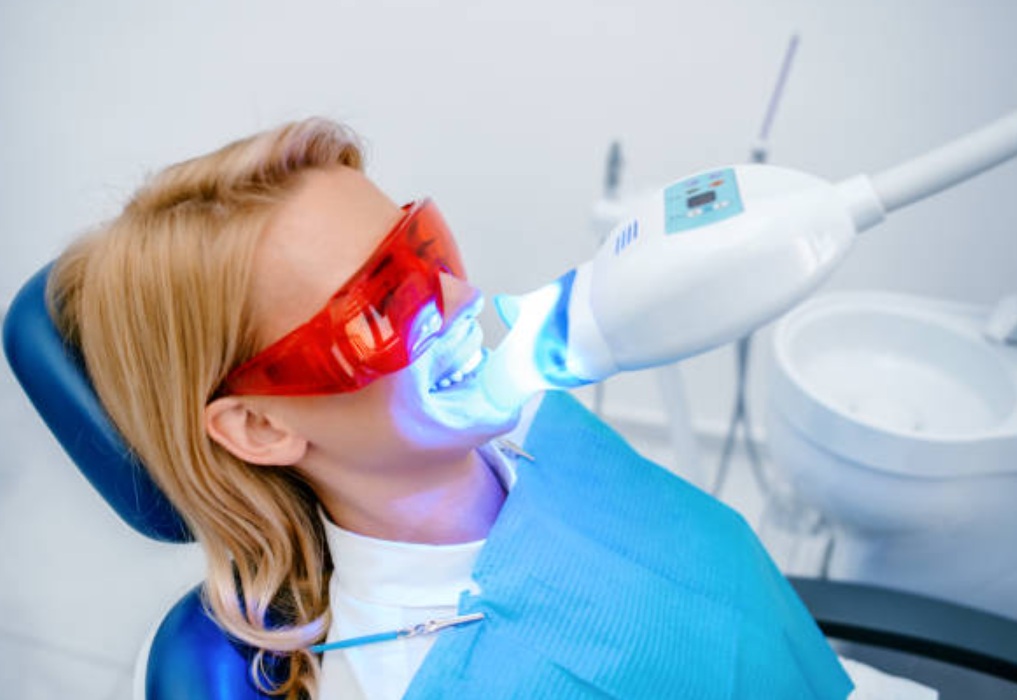A common cosmetic technique teeth whitening is intended to brighten teeth and efficiently eliminate discolouration or stains. This procedure improves the way your smile looks, giving you more self confidence and creating a favourable impression that lasts. Smoking certain meals and beverages, ageing and poor oral hygiene practices can all cause discoloration of teeth over time. In order to remove stains and brighten tooth enamel whitening procedures employ bleaching substances such as hydrogen peroxide or carbamide peroxide. Professional at the office procedures at home kits and without a prescription solution catered to different tastes and price ranges are among the options available. The technique employed the initial tooth colour and the degree of staining or discolouration all affect the outcome. People should exercise appropriate dental hygiene, refrain from frequently colouring food, drinks or tobacco products in order to preserve results.
How Teeth Whitening Actually Works?
In order to properly remove deeply ingrained stains teeth whitening uses bleaching solutions that penetrate the enamel. The hydrogen peroxide or carbamide peroxide included in the majority of whitening creams releases oxygen molecules that react with the discoloured molecules. Without causing any harm to the tooth structure these oxygen molecules oxidise stain particles by penetrating the enamel porous surface. Without actually destroying any enamel the oxidation process lightens the colour of teeth giving them a whiter appearance. Higher peroxide concentrations are typically found in professional treatments, which when administered under careful dental supervision produce faster and more obvious benefits. Lower concentrations are used in at home whitening kits and regular treatment over several days or weeks is necessary to get the desired brightness levels. Heat or light may be used during at work procedures to speed up the chemical process. It will improve the overall whitening results.
Depending on the type of stain, yellow stains react better to whitening than brown or grey ones. Trauma or medication induced intrinsic stains might not go away and may need to be treated with other cosmetic dentistry procedures. During the whitening process peroxide temporarily increases tooth porosity which can cause dental sensitivity typical side effect. Before and after treatment dentists advise using desensitising toothpaste to minimise discomfort and preserve the health of the enamel. Steer clear of staining foods and beverages such as coffee, tea red wine and berries to maintain the whitening effects. The effects of the whitening treatment are greatly extended by practicing good dental hygiene which includes brushing and flossing on a regular basis. Teeth whitening should be safe and appropriate for your teeth. It’s crucial to speak with a dentist before beginning.
The Psychology of a White Smile
Teeth whitening makes people feel more at ease when they smile. Over time, this can lift their spirits and lessen social anxiety. This confidence boost could lead to increased social interaction and better connections. It may also result in more success in both personal and professional spheres. White grins are widely shown in the media and in advertisements as a sign of beauty which serves to uphold social norms and expectations around dental appearance. People could therefore feel under pressure to whiten their teeth in order to conform to these ideals of beauty. Increased spending on dental products or aesthetic procedures to enhance appearance may result from this desire for whiter teeth. Although aiming for a white smile can improve psychological health having irrational expectations can also lead to problems with self-esteem.
It is critical to know that natural tooth colours differ and that flawless whiteness is not always an indication of good dental health. Healthy attitudes towards dental care and identity can be encouraged by educating people about balanced beauty standards. Dental practitioners are essential in helping patients make knowledgeable decisions regarding teeth whitening procedures and their outcomes. The psychology of a white smile encompasses a nuanced fusion of emotional health social impact and perceptions of oneself.
